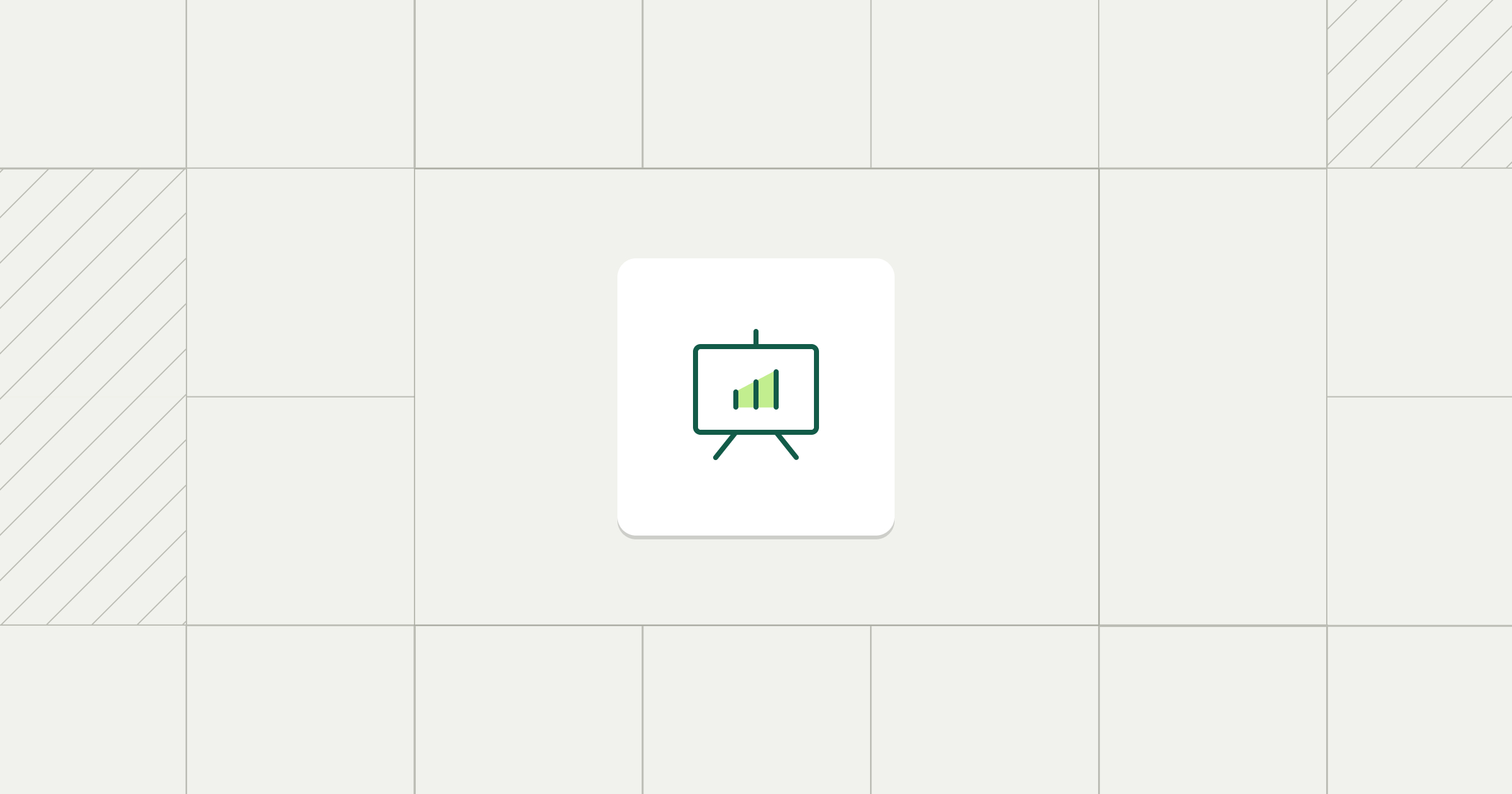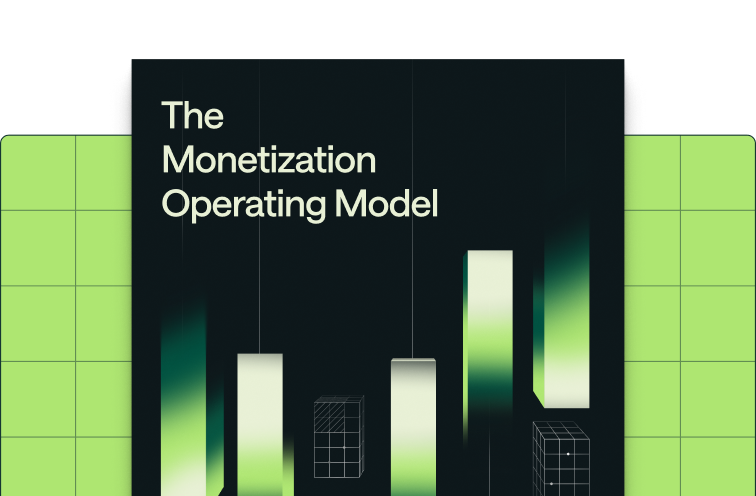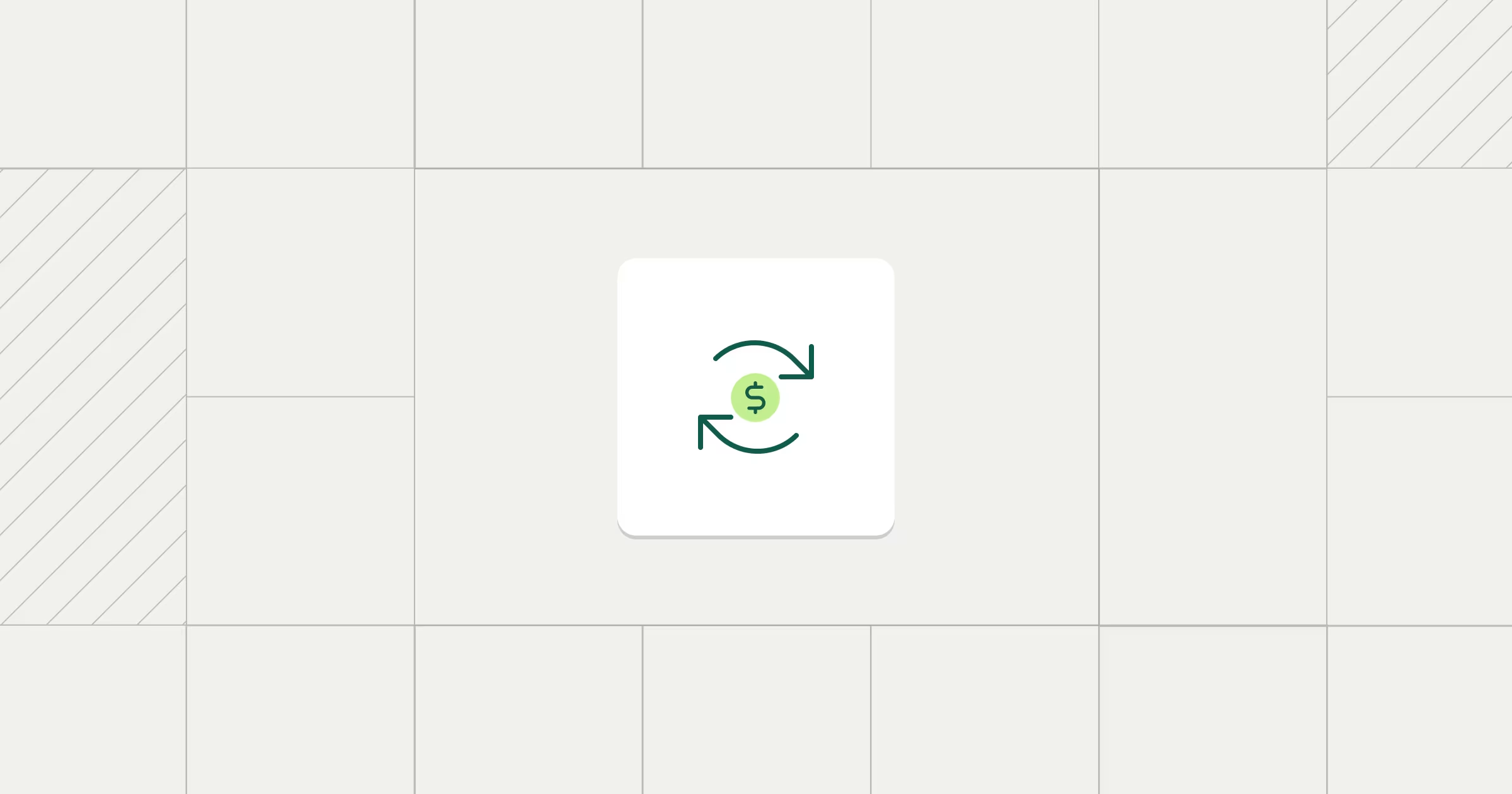Share
Chief Financial Officers care about predictable revenue. But traditional forecasting breaks down when pricing models shift from seats to usage.
When customers pay fixed monthly subscriptions, next quarter's revenue looks a lot like this quarter's. When a customer might spend $100 or $10,000 depending on their AI usage, spreadsheet-based forecasts become educated guesswork.
Revenue forecasting transforms from backward-looking trend analysis into forward-looking strategic intelligence when powered by real-time data and advanced predictive models.
You probably felt it the moment your product shifted from selling seats to charging for usage. The tidy revenue curve your board loved suddenly looked like a heart-rate monitor. When pricing rides on customer consumption, yesterday's straight-line projections no longer hold.
This operational shift requires infrastructure that can process billing data continuously rather than monthly. Companies that adopt real-time analytics cut forecasting errors by 5-10%, a gap wide enough to determine hiring plans or cash-flow comfort levels. Yet most finance teams still reconcile usage data at month-end, long after decisions were made.
Modern forecasting requires new approaches that handle both subscription predictability and usage variability. The companies getting this right treat revenue forecasting as forward-looking strategic intelligence powered by real-time data, not backward-looking trend analysis from monthly reports.
{{widget-monetization-whitepaper}}So, what is revenue forecasting?
Revenue forecasting estimates future sales based on historical performance, market trends, and economic conditions to enable informed business decisions across resource allocation, risk management, and growth planning.
Traditional forecasting assumes linear growth patterns that work well for subscription models. When every customer pays the same monthly fee, revenue compounds predictably. Historical data provides reliable baselines for future projections.
Usage-based and hybrid pricing models break these assumptions. Customer spend varies dramatically based on consumption patterns, product adoption, and business growth. A software company adding AI features might see one customer generate $50 in monthly usage while another generates $5,000 from the same feature set.
The challenge is systemic, not mathematical. You need forecasting systems that ingest hourly usage, segment customers by behavior, and update the moment a sales rep closes a commitment. This transforms revenue forecasting from a backward-looking report card into forward-looking strategic intelligence: a living model that alerts you to risk before it hits the P&L.
Revenue forecasting transforms from trend analysis into dynamic prediction when powered by real-time data. Companies using platforms like Metronome provide visibility on hourly and daily billing data for more accurate predictions instead of waiting for monthly financial closes.
Your forecast drives everything from hiring decisions to funding rounds. Investors and board members rely on it to evaluate burn rates, approve growth investments, and assess market position. That level of strategic dependence requires forecasting accuracy that only comes from granular, real-time billing data.
Why revenue forecasting is harder in a usage-based pricing world
Usage-based pricing transforms revenue forecasting from trend analysis into dynamic prediction. Finance teams now track two distinct revenue streams with different mathematical behaviors: predictable subscription components and variable consumption patterns that fluctuate with customer activity levels.
Usage patterns vary unpredictably. A customer's monthly spend might fluctuate based on seasonal business cycles, product launches, or changing consumption behavior. Enterprise customers might hit usage minimums in slow months and trigger significant overage charges during peak periods.
Multiple revenue streams require separate models. Hybrid pricing means forecasting subscription revenue with one approach while modeling usage-based components with another. AI features, API consumption, and storage costs all scale differently and need distinct predictive models.
Real infrastructure costs make forecasting critical. AI usage drives actual compute costs that scale with customer consumption. Unlike subscription models where serving costs remain relatively fixed, usage-based products have variable cost structures that make accurate forecasting essential for maintaining margins.
Customer lifecycle patterns change. Traditional software companies can predict expansion revenue based on seat growth and renewal rates. Usage-based companies need to understand consumption patterns, feature adoption rates, and value realization timelines to forecast growth accurately.
Data integration becomes the primary constraint. Legacy finance systems handle static subscription data effectively but struggle with real-time, granular usage feeds that modern consumption models require. Without platforms designed for continuous usage capture and real-time data integration rather than monthly snapshots, forecasting becomes reactive rather than predictive. The ability to process and integrate usage signals as they occur enables proactive financial planning and immediate visibility into revenue trends.
Revenue volatility increases significantly under consumption-based models. Enterprise customers can double API consumption one month and throttle back the next, creating swings that seat-based pricing never produced. Early-stage SaaS companies experience unpredictable cash flow patterns where variable usage-driven revenue makes it difficult to maintain consistent monthly projections, even with healthy overall growth trends.
The infrastructure requirements compound these challenges. Metering millions of events, converting them to billable units, and synchronizing totals with ERP systems requires architecture designed for real-time data processing. Systems built for static subscriptions create delays that make accurate forecasting impossible.
Why revenue forecasting matters more than ever
The shift toward usage-based and hybrid pricing models makes forecasting both more difficult and more critical for business success.
Accurate forecasts enable effective budget planning and strategic resource distribution. When revenue can fluctuate based on customer usage patterns, companies need precise predictions to allocate engineering resources, plan infrastructure capacity, and set realistic growth targets.
Real-time insights help anticipate revenue deviations and adjust strategies before problems compound. Traditional monthly reporting cycles mean revenue issues surface weeks after they occur. Daily visibility into usage trends and consumption patterns enables proactive responses to changing customer behavior.
Credible projections support funding rounds and strategic partnerships. Investors understand subscription revenue predictability but need education about usage-based growth patterns. Accurate forecasting models that account for consumption variability build confidence in business sustainability and growth potential.
Forecasting affects product development, sales compensation, and operational planning. Revenue predictions drive feature prioritization, determine sales quotas, and influence hiring decisions. When forecasts account for usage-based expansion opportunities, teams can align resources with actual growth drivers.
Variable consumption creates unpredictable cash flow patterns that transform revenue forecasting from a quarterly finance routine into daily operational intelligence. Without forward visibility based on real-time data, companies risk over-hiring during usage spikes or constraining growth before demand increases.
AI-heavy products face particularly acute forecasting challenges. Inference costs can erode margins rapidly if customer usage exceeds projections. Traditional seat-based models mask this risk until infrastructure bills arrive. Forecasting granular usage against compute costs enables proactive pricing adjustments or usage limit modifications before gross margins deteriorate.
When pricing and consumption patterns change faster than traditional accounting cycles, forecast quality determines operational decision quality across the entire organization.
Seven revenue forecasting models
Different forecasting models serve different business contexts, but hybrid pricing companies need sophisticated approaches that handle multiple revenue streams. Forecasting model choice determines whether your revenue predictions help or hurt business decisions.
Simple models work when you have stable subscription revenue and limited historical data. Advanced models become necessary when usage variability threatens cash planning or when you need probability ranges rather than single-point estimates. The key is matching model sophistication to your data availability and business complexity.
Simple models
Straight-line projection, moving average, and linear regression assume tomorrow resembles yesterday. They provide quick answers for pure subscription businesses with predictable growth, but break down when usage becomes a significant revenue component.
Straight-line method extrapolates current sales data into the future, assuming steady growth. Drivetrain's analysis shows straight-line models "overshoot or undershoot" once usage enters the revenue mix because they miss consumption swings.
Moving average calculates average revenue over specific periods, like the last 12 months. Industry best practices recommend supplementing moving averages with cohort analysis when usage-based revenue becomes a material percentage of total billings.
Linear regression assumes linear relationships between variables. Dreamdata calls regression "baseline, not destination" for companies shifting toward usage-based monetization.
These simple approaches fail in usage-based environments because they rely on past averages rather than granular, per-customer consumption data. They assume constant marginal growth and ignore whale effects: single customers quadrupling usage in a quarter, or drop-offs following product rollout failures.
Advanced models
Exponential smoothing, ARIMA, seasonal models, Monte Carlo simulation, and ensemble machine learning methods handle the complexity that usage-based revenue creates.They require more data and statistical expertise but provide accuracy that matches business risk.
Exponential smoothing gives more weight to recent data points. Finance teams that integrate usage feeds can reduce forecast error, though improvement varies by context.
ARIMA handles complex seasonal patterns over longer periods. It works well with 2-3 years of data but requires statistical expertise.
Holt-Winters seasonal accounts for seasonality in usage patterns. Business software often sees quarterly spikes and holiday slowdowns.
Monte Carlo simulation generates revenue ranges with confidence intervals. Drivetrain recommends Monte Carlo when variable usage exceeds 40% of total revenue.
Machine learning ensembles ingest multiple signals to predict per-customer usage, then aggregate into P&L views. The cost is transparency—you may need additional analysis to explain drivers to board members.
Choosing the right mix requires matching complexity to your situation. Start simple when historical data is thin; straight-line forecasting works for the first three quarters post-launch. As usage revenue climbs and data accumulates, layer exponential smoothing for agility, then graduate to ARIMA or Holt-Winters for trend and seasonality. Introduce Monte Carlo when usage volatility threatens cash stability, and deploy machine learning ensembles when you have data infrastructure and need customer or feature-level predictions.
Hybrid businesses rarely use single techniques; they combine models, validate against actuals monthly, and adjust weights as pricing experiments evolve. The common thread across all approaches is data freshness. Whether you choose smoothing or simulation, feed your models real-time billing streams and usage logs.
How to collect data and forecast revenue accurately
Revenue forecasts fail when data lives in a dozen systems and arrives a week late. Usage-based models magnify that pain: any gap between real-time consumption and finance's spreadsheet shows up as a surprise on the P&L. Accurate forecasting depends on unified data that eliminates manual processes and provides real-time visibility across all revenue streams.
Gather the right data
Start by collapsing fragmented sources into one billing-grade dataset. Real-time aggregation delivers two benefits: forecasts stay current as soon as a customer bursts above their commit, and you eliminate the manual reconciliation process that slows month-end close.
Historical performance provides baselines through past revenue by product line, customer segments, and time periods. But usage-based forecasting needs granular consumption data, not just aggregate revenue figures. Pull at least 12-24 months of revenue by product line, cohort, and geography. Cohort granularity matters because usage ramps differently for early adopters than for late-stage enterprises.
Customer behavior reveals patterns through acquisition rates, retention data, expansion signals, and usage growth trajectories. Track acquisition velocity, churn, expansion events, and feature adoption alongside variable usage metrics: API calls, data processed, or other value metrics that drive consumption charges. Understanding how customers adopt features and increase consumption over time enables more accurate growth predictions.
Market indicators include economic conditions, competitive landscape changes, and industry trends that affect customer spending patterns. Usage-based revenue often correlates more closely with customer business success than subscription revenue does. Layer in economic signals—industry growth rates, competitor launches, even holiday seasonality—because external shocks often trigger usage spikes or slowdowns.
Operational metrics encompass sales pipeline data, contract renewals, and pricing experiment results. Feed pipeline stage data, renewal schedules, and results from pricing experiments into your forecasting system. Companies testing new usage-based models need to track adoption rates and revenue impact to refine forecasting assumptions.
Metronome's data advantage
Modern billing platforms like Metronome solve the plumbing by streaming hourly and daily billing data into unified ledgers that connect to systems you already use: Stripe, Salesforce, NetSuite, QuickBooks. The result is fewer manual exports and faster close cycles.
Real-time billing data provides access to hourly or daily billing and revenue information, giving teams the visibility needed to forecast effectively and speed up month-end close processes.
"Metronome has saved us hours each month by automating manual workflows and managing customer pricing and usage data more effectively," according to feedback from Ariana Grush, Senior Finance Transformation Manager from Databricks on Metronome's finance solutions.
Unified revenue view eliminates manual, error-prone reporting with consolidated visibility across self-serve plans, cloud marketplace purchases, enterprise contracts, and usage-based components.
"Metronome helps us track, monitor, and report on customer usage and ensures our go-to-market teams have timely information," says Manish Bhaskar, Director of Product Management from Cribl.
Integration capabilities bring Metronome data directly into existing revenue workflows through connections with Stripe, Salesforce, NetSuite, QuickBooks, and other business systems.
"We're bringing Metronome data in through Segment and flowing data out into Looker dashboards, Snowflake, and Salesforce," explains Nick Tankersley, Senior Director of Product Management from Cribl.
Pricing experimentation support enables rapid testing of new models and measurement of revenue impact. "Metronome's ease of use, especially with pricing experimentation, was a game-changer for our growth journey," notes Daniel Sarfati, Director of Product Management at Salad.
Real-time data integration matters because delayed information creates compounding errors in usage-based models. Companies that integrate usage, CRM, and billing into live dashboards report improved forecasting accuracy. The integration eliminates manual reconciliations and gives finance, sales, and product teams synchronized views of revenue momentum.
Select the right forecasting model
Data availability determines model complexity. Simple models work with limited historical data, while advanced models need extensive datasets to produce reliable results. When you have only six months of subscription-heavy history, straight-line or moving-average projections often suffice. As soon as usage drives a material share of ARR, those simple methods crumble.
Business complexity drives model selection. Usage-based and hybrid pricing models require sophisticated approaches that handle multiple revenue components with different growth patterns and seasonal effects. For hybrid or fully variable revenue, cohort-based regression or exponential smoothing captures expansion and contraction patterns better than linear fits.
Accuracy requirements vary by use case. Board-level forecasts need higher precision and confidence intervals than operational planning exercises. Executive reporting demands tighter variance tolerances than day-to-day capacity planning, with different exception thresholds set based on the strategic importance and visibility of each forecast. Reserve complex models (ARIMA, gradient boosting, Monte Carlo) for high-stakes forecasts that directly impact major business decisions, and keep pipeline-driven roll-ups lightweight for routine operations.
Hybrid pricing companies typically need multiple forcasting models running simultaneously. Exponential smoothing might work well for usage trends while linear regression handles the subscription base. Best practice involves segmenting fixed and usage streams, running distinct models, then rolling them up into consolidated views.
Whatever technique you deploy, validate it quarterly. Hold out recent months as back-test sets, measure mean absolute percentage error, and switch models if error rates drift. Each iteration becomes easier when the underlying data is real-time, reconciled, and complete.
Building competitive advantage through predictive revenue intelligence
Revenue forecasting evolves from a finance exercise into a cross-functional growth engine when powered by real-time data, integrated systems, and models that reflect modern pricing complexity.
Companies that master usage-based forecasting gain competitive advantages through faster response to market changes, more accurate resource planning, and better investor confidence. They can spot expansion opportunities early, identify churn risks before they materialize, and optimize pricing strategies based on actual consumption patterns.
The transformation requires investment in billing infrastructure that provides real-time data, forecasting models that handle usage variability, and processes that connect forecasting insights to business decisions. Finance teams become strategic partners when they can predict usage-based revenue accurately and provide actionable insights for growth.
Modern revenue forecasting becomes a competitive differentiator when companies can predict and plan for usage-based growth patterns that traditional models can't handle.
{{widget-monetization-whitepaper}}Frequently asked questions
Revenue forecasting becomes a living process once usage-based or hybrid pricing enters the mix. After helping dozens of finance teams navigate this shift, these are the questions that surface repeatedly when you're balancing predictability with pricing complexity.
What's the difference between revenue forecasting and sales forecasting?
Revenue forecasting projects total income from all sources: subscriptions, usage-based charges, renewals, expansions, and one-time fees. Sales forecasting focuses on predicting the value and timing of new deals in the pipeline based on conversion rates. The distinction matters because in usage-based models, revenue can shift significantly after contracts are signed. Your sales team might close $2M in new business, but if existing customers consume 30% less than expected, your total ARR will still fall short.
How often should companies update their revenue forecasts?
Modern software companies should update forecasts monthly at minimum, with real-time dashboards for usage-based components that change daily or weekly. Monthly updates minimum, with real-time dashboards pulling metered data directly from billing systems. Seat-based businesses sometimes survive on quarterly re-forecasts, but usage volatility makes that cadence dangerous.
Which forecasting model works best for hybrid pricing?
Hybrid models require combined approaches using exponential smoothing for usage trends plus linear models for subscription base revenue. Run split models because no single approach handles both fixed and variable streams effectively. Most finance teams start simple—track usage trends separately from subscription base, then combine outputs with confidence intervals that reflect each stream's predictability.
What data quality issues cause forecasting failures?
Manual data entry errors, delayed reporting cycles, and siloed systems that don't provide unified revenue visibility across pricing models. Three patterns kill accuracy: manual CSV uploads introducing errors, reporting lags while waiting for engineering to close books, and fragmented systems tracking contract terms separately from usage data.
How do you forecast revenue for new pricing models?
Start with small customer cohorts, use A/B testing to measure adoption and revenue impact, and leverage platforms like Metronome that enable rapid pricing experimentation with real-time results tracking. Launch pricing changes to representative customer slices and track daily usage patterns for 30-60 days. A/B test rate structures when possible. Build scenarios around different adoption rates, then scale the model after variance stabilizes.






.png)

.avif)


